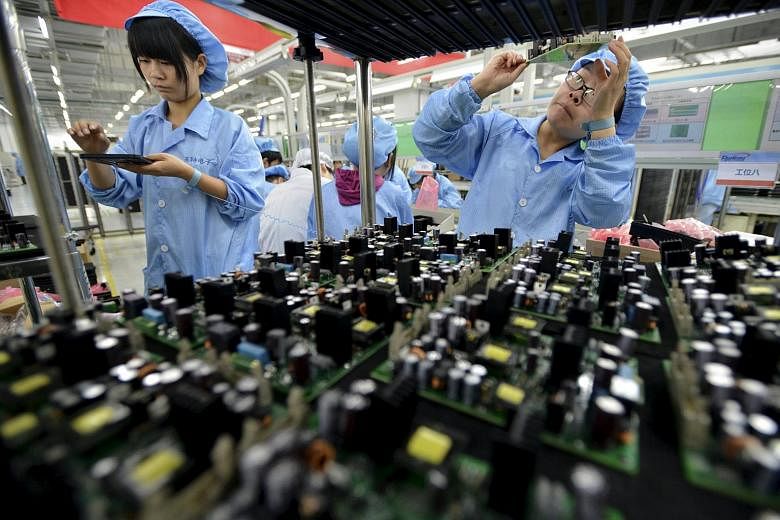BEIJING (REUTERS) - China's factory activity fell for an eighth straight month in October but at a slower pace as export orders showed some signs of life, a private survey showed on Monday (Nov 2), pointing to continued sluggishness in the world's second-largest economy.
The Caixin/Markit China Manufacturing Purchasing Managers' Index (PMI) edged up to 48.3 in October from 47.2 in September.
The highest reading since June 2015 will likely fuel hopes that the industry's long slump may be bottoming out, but it remained well below the 50 mark, signifying a further contraction in activity that will raise doubts about whether the economy can see a modest pickup in the fourth quarter.
Taken together with official factory and services sector surveys released on Sunday (Nov 1), the readings reinforced the view that business conditions in China are continuing to deteriorate but at a gradual albeit uneven rate, with no signs of a hard landing which recently spooked global investors.
Suggesting some improvement in sluggish global demand, the Caixin survey showed new export orders expanded for the first time since June, albeit marginally. The sub-index rose to 50.7 from 44.6 in September.
Demand at home remained sluggish, however. The overall new orders sub-index, which covers domestic and export orders, shrank for the fourth month in a row in October, though the contraction was more modest than in September.
"The slight upswing shows the manufacturing industry's overall weakening has slowed down, indicating that previous stimulus measures have begun to take effect," said Mr He Fan, chief economist at Caixin Insight Group.
Manufacturers shed jobs for the 24th straight month on weakening sales, but again the rate of reduction was the weakest in three months.
China's official factory survey released on Sunday showed activity unexpectedly shrank for a third straight month, though the contraction was modest. The NBS survey pointed to weaker export orders and further layoffs.
The private survey focuses on small- and mid-sized companies, which are facing greater strains from the economic slowdown, while the official gauge looks more at larger, state firms.
Beijing has rolled out a flurry of support steps since last year to avert a sharper slowdown, including slashing interest rates six times since November. But such measures have been slower to take effect than in the past, and economists remain wary about the outlook.
"Weak aggregate demand remained the biggest obstacle to economic growth, and the risk of deflation resulting from the continued fall in the prices of bulk commodities needs attention," said Mr He.
China's economy grew 6.9 per cent between July and September from a year earlier, dipping below 7 per cent for the first time since the global financial crisis, though some market watchers believe real growth levels are much lower than official data suggest.
Weighed down by a property downturn, weak exports, factory overcapacity and high levels of local debt, growth is expected to slow to a quarter-century low of around 7 per cent this year.
Many economists have expected economic growth would bottom out in the third quarter, with a modest improvement late this year and into early 2016 as additional stimulus measures gradually take effect.

